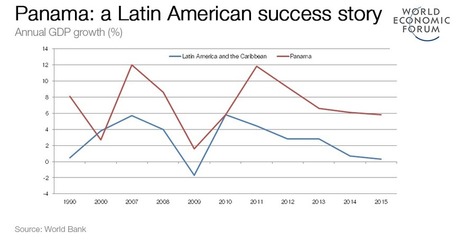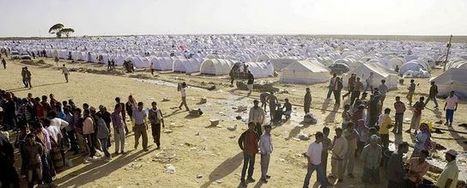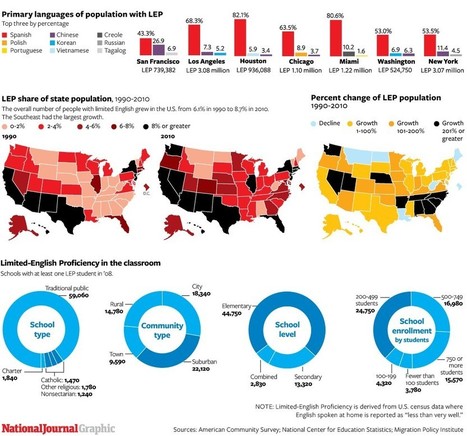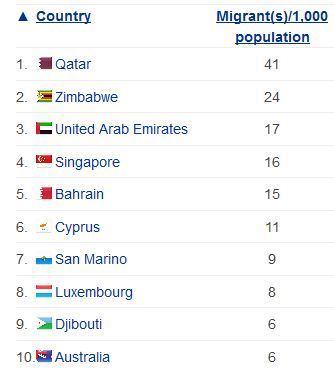California Santa Cruz
Get Started for FREE
Sign up with Facebook Sign up with X
I don't have a Facebook or a X account
 Your new post is loading... Your new post is loading...
 Your new post is loading... Your new post is loading...

Meagan Harpin's curator insight,
September 28, 2013 11:44 PM
In the last 10 years about 1.25 million russians have emigrated out of Russia, but the way they do it is interesting. When they leave they dont sell their houses, or aparments, or cars they simply lock their doors and quietly slip away to the airports at night. The reasons for leaving are different thought, some are leaving because the prime minister is expected to return while some are leaving because of the awful econonmy. Either way the massive amounts of emigration is leading to a higher death rate then birth rate overall.
Nathan Chasse's curator insight,
March 1, 2014 1:23 AM
This article from a couple years ago is about Russian emigration. A large number of Russians were leaving the country for better economic opportunity. Some cite the overbearing rule of Putin, but the pay in other countries is just better than what Russia can offer. This was particularly the case for the more educated, another instance of "brain drain" hurting a nation which is already in trouble. 
Jess Deady's curator insight,
May 1, 2014 12:00 PM
Migration occurs for many reasons. People move from country to country every day. Leaving Russia was this families choice and moving to Israel can have an impact on them greater than if they were to stay in Russia.

jada_chace's curator insight,
September 10, 2014 9:47 AM
Refugees are found in a large percent of Earth’s surface. Some people chose to migrate, while others are forced. Some leave their home in order to get away from their country, for example due to a war. Many flee to nearby countries and are afraid to return to their hometown because they are frightened of what might happen if they go back. Another reason many refugees leave their country is due to environmental problems and the people cannot afford to live in that country.
Elle Reagan's curator insight,
October 17, 2014 1:31 PM
I felt like this article was very relevant to our Unit 2, Population. We have talked about refugees and migration in a great deal and I thought this map was a good visual. I also liked the information it provided about what refugees really are and that they are really a part of the world migration pattern.
Katelyn Sesny's curator insight,
October 31, 2014 12:31 PM
Refugees are often thought of as those with the "refugee problems" they face, the problems they create and the constant struggle they possess of never being able to go home for the political/religious dispute in their homeland. However this articles goes into depth of the definition of a refugee and furthermore focuses on the topic of "environmental refugees' who are forced to get up and leave their land due to soul degradation, flooding, etc. - UNIT 2

Mr Ortloff's curator insight,
January 22, 2013 12:20 AM
Good source for stats on non-voluntary migrants. |

Miles Gibson's curator insight,
November 26, 2014 12:43 PM
Unit 2 population and migration This map shows the population of migrants in certain states and compares them to other states. This demographic specifically highlights Texas and shows its migrant information. Texas has the highest immigrant income out of all of the states. Also Texas has very few naturalized citizens who used to be an immigrant. This map relates to unit 2 because it shows the illegal immigration. And immigration theories. This proves ravensteins laws correct because it shows how people move a short distance to migrate, knowing that most migrants to America come from Latin America. This map is a great example of ravensteins theories and unit 2
Lauren Sellers's curator insight,
May 22, 2014 12:04 PM
This is an interesting little chart because it reveals to us which countries have the highest percentage of migrants that make up their general population. Definitely suprised me to see Qatar as the number one on the list, I would have expected the US to be at the top, but it is not even in the top 10!
Lona Pradeep Parad's curator insight,
May 28, 2014 7:26 PM
This shows the net migration of immigrants.
Adrian Bahan (MNPS)'s curator insight,
September 30, 2014 4:04 PM
Remember this is based on a % of the total population, and not total #. Which countries have the most migrants per capita living there? What spatial or development patterns do you see on this list?

Chris Costa's curator insight,
September 23, 2015 2:18 PM
It's interesting to compare and contrast the reaction of Belize's English-speaking population to an influx of Spanish-speaking immigrants with that of the United States. I enjoyed reading that the welcoming of immigrants by the ruling political system has done much to lessen racial tensions, with the various ethnic groups scattered along the political spectrum. This contrasts sharping with the American political spectrum, where there is a clear racial divide between conservatives and liberals. Americans could learn a lot from Belize in this regard, although the transition has been far from smooth in the nation. Although Spanish is now taught in schools as a result of the reality of the immigration wave in the country, there is some push-back from English speaking groups. Many employees of service industries are losing their jobs to those who can offer bilingual services, as well as some other economic changes as a result of the influx of new immigrants. However, the degree of this tension is a lot lower there than it is in the United States. It will be interesting to see how this debate shapes up in the future; it could very well serve as a helpful model for American politicians. 
Alex Smiga's curator insight,
October 4, 2015 11:49 AM
You won't BELIZE this link.... get it. I'm hilarious.
Adam Deneault's curator insight,
December 6, 2015 7:48 PM
This country of Belize seems to be a very interesting place. I never knew that in Central America, there was a country who's official language is English. It is made up of a lot of retired British soldiers and North American "sun seekers." Migration into Belize comes from other place in Central America, of its 300,000 person population, 15% are foreign born. It is now becoming a very mixed country and Spanish is making a gain on English. Schools teach in English, but Spanish lessons are mandatory. A population boom both helps and hurts the economy. Most migrants are of working age and are willing to work low wages in brutal conditions. A lot of Belizeans tell census that they are not working and with Spanish gaining ground, a lot of monopolistic people are losing jobs to those who are bilingual. Although there are frictions between ethnic groups, in general things are good and political party lines are not divided by ethnicity. |






















